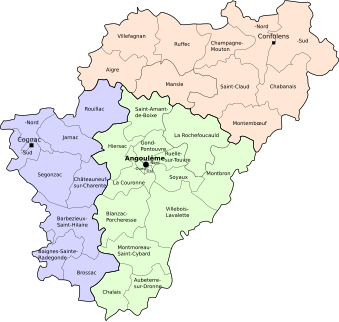
Charente is a French department that was established in 1790 based on geographic criteria, the upper and middle basin of the Charente River, and historical reasons. Its central part corresponds to the former diocese and then the county of Angoumois.[1] Before the Revolution, this region did not have political, religious, or judicial unity. Its history has been closely associated with Aquitaine. However, the county of Angoumois, a royal birthplace, has had a distinct history and has played a significant role in the history of France.
Charente is rich in historical sites that reflect continuous human settlement from the Paleolithic era through the Neolithic and the Iron Age. Following a prosperous Gallo-Roman period, the early Middle Ages witnessed ongoing Christianization, while the later Middle Ages saw the construction of Romanesque churches in every village. During the Hundred Years' War, Charente served as a frontier between the territories of the King of England and the King of France, enduring significant devastation. Despite a period of prosperity, particularly under Francis I, the Wars of Religion and the Protestant exodus led to economic stagnation, which only began to recover under Napoleon III with the rise of cognac production and industrialization in Angoulême.
- ^ "Department of Charente". Mission FRANCE Guichet.